Expanded Universe (57 page)

(But such are the booby traps of English or
any
verbal language where abstract mathematics is the
only
correct language.)
A wide variety of other transformations permits antiprotons and positrons to yield antineutrons. The twin types of varieties of transformations mentioned above are simply samples; there are many other types being both predicted mathematically and detected in the laboratories almost daily—and many or most transformation series involve antiparticles of antimatter.
Nevertheless, antimatter is scarce in our corner of the universe—lucky for us because, when matter encounters antimatter,
both
explode in total annihilation. E = mc
2
is known to everyone since its awful truth was demonstrated at Hiroshima, Japan. It states that energy is equivalent to mass, mass to energy, in this relation: energy equals mass times the square of the velocity of light in empty space.
That velocity is almost inconceivable. In blasting for the moon our astronauts reached nearly 7 miles/second; light travels almost 27,000 times that speed—186,282.4 (±0.1) miles or 299,792.5 (±0.15) kilometers each second. Round off that last figure as 300,000; then use the compatible units of science (grams, centimeters, ergs) and write in centimeters 3 x 10
10
, then square it: 9 x 10
20
, or 900,000,000,000,000,000,000.
(!!!)
This fantastic figure shouts that a tiny mass can become a monstrous blast of energy—grim proof: Hiroshima.
But maximum possible efficiency of U
235
fission is about 1/10 of 1%; the Hiroshima bomb's actual efficiency was much lower, and H-bomb fusion has still lower maximum (H-bombs can be more powerful through having no limit on size; all fission bombs have sharp limits). But fission or fusion, almost all the reacting mass splits or combines into other elements; only a trifle becomes energy.
In matter-antimatter reaction, however,
all
of
both
become energy. An engineer might say "200% efficient" as antimatter undergoing annihilation converts into raw energy an equal mass of matter.
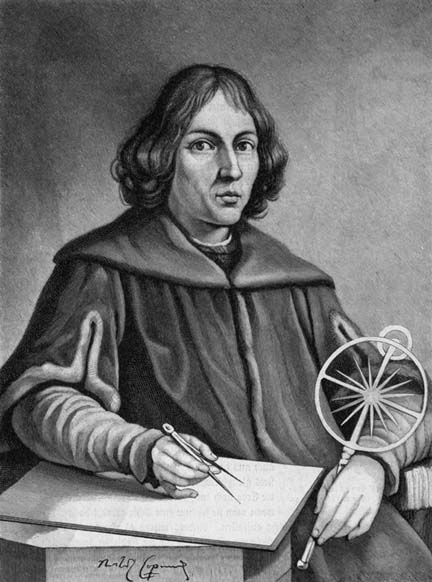 Nicolaus Copernicus (1473—1543)
Nicolaus Copernicus (1473—1543)
 Johannes Kepler (1571—1630)
Johannes Kepler (1571—1630)
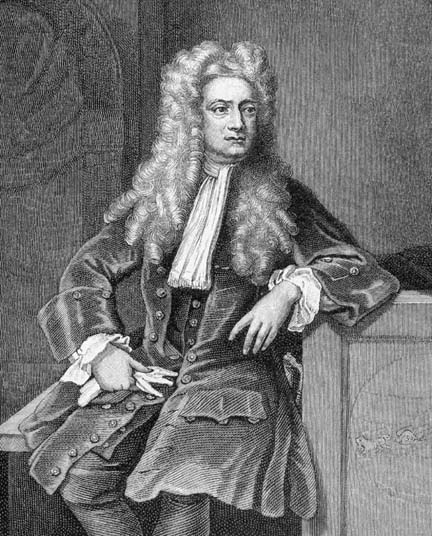 Isaac Newton (1643—1727)
Isaac Newton (1643—1727)
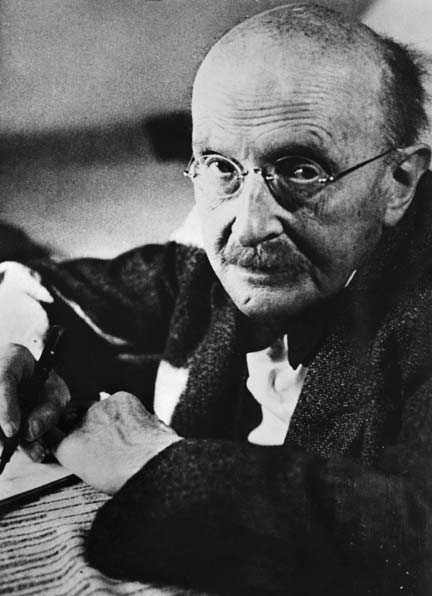 Max Planck (1858—1947)
Max Planck (1858—1947)
 James Clerk Maxwell (1831—1879)
James Clerk Maxwell (1831—1879)
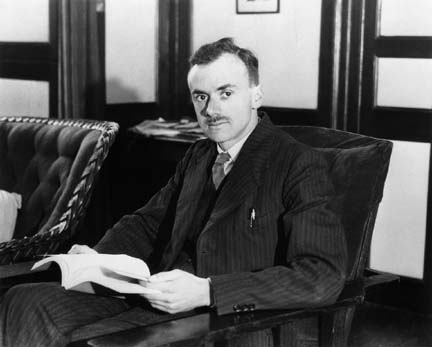 Paul A. M. Dirac (1902—1984)
Paul A. M. Dirac (1902—1984)
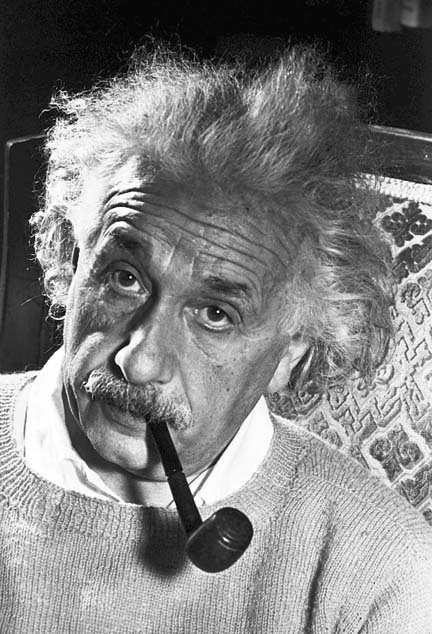 Albert Einstein (1879—1955)
Albert Einstein (1879—1955)
An experimental physicist uses expensive giant accelerators to shoot particles at 99.9+% of the speed of light, or sometimes gadgets built on his own time with scrounged materials. Large or small, cheap or costly, he works with
things.
A mathematical physicist uses pencil, paper, and brain. Not my brain or yours—unless you are of the rare few with "mathematical intuition."
That's a tag for an unexplainable. It is a gift, not a skill, and cannot be learned or taught. Even advanced mathematics ("advanced" to laymen) such as higher calculus, Fourier analysis,
n
-dimensional and non-Euclidean geometries are skills requiring only patience and normal intelligence . . .
after
they have been invented by persons having mathematical intuition.
The oft-heard plaint "I can't cope with math!" may mean subnormal intelligence (unlikely), laziness (more likely), or poor teaching (extremely likely). But that plaint usually refers to common arithmetic—a trivial skill in the eyes of a mathematician. (
Creating
it was not trivial. Zero, positional notation, decimal-or-base point all took genius; imagine doing a Form 1040 in Roman numerals.)
Of billions living and dead perhaps a few thousand have been gifted with mathematical intuition; a few hundred have lived in circumstances permitting use of it; a smaller fraction have been mathematical physicists. Of these a few dozen have left permanent marks on physics.
But without these few we would not have science. Mathematical physics is basic to
all
sciences. No exceptions.
None.
Mathematical physicists sometimes hint that experimentalists are frustrated pipefitters; experimentalists mutter that theoreticians are so lost in fog they need guardians. But they are indispensable to each other. Piling up facts is not science—science is facts-
and
-theories. Facts alone have limited use and lack meaning; a valid theory organizes them into far greater usefulness. To be valid a theory must be confirmed by
all
relevant facts. A "natural law" is theory repeatedly confirmed and drops back to "approximation" when
one
fact contradicts it. Then search resumes for better theory to embrace old facts plus this stubborn new one.
No "natural law" of 500 years ago is "law" today; all our present laws are probably approximations, useful but not perfect. Some scientists, notably Paul Dirac, suspect that perfection is unattainable.
A powerful theory not only embraces old facts and new but also discloses unsuspected facts. These are landmarks of science: Nicolaus Copernicus' heliocentric theory, Johannes Kepler's refining it into conic-sections ballistics, Isaac Newton's laws of motion and theory of universal gravitation, James C. Maxwell's equations linking electricity with magnetism, Planck's quantum theory, Einstein's relativity, Dirac's synthesis of quantum theory and special relativity—a few more, not many.
Mathematical physicists strive to create a mathematical structure interrelating all space-time events, past and future, from infinitesimally small to inconceivably huge and remote in space and time, a "unified field theory" embracing 10 or 20 billion years and light-years, more likely 80 billion or so—or possibly eternity in an infinity of multiple universes.
Some order!
They try. Newton made great strides. So did Einstein. Nearly 50 years ago Dirac brought it closer, has steadily added to it, is working on it today.
Paul Dirac may be and probably is the greatest living theoretical scientist. Dirac, Newton, and Einstein are equals.
The experimentalists' slur about theoretical physicists holds a grain of truth. Newton apparently never noticed the lovely sex in all his years. Einstein ignored such trivialities as socks. One mathematical physicist who swayed World War II could not be trusted with a screwdriver.
Dirac is
not
that sort of man.
Other than genius, his only unusual trait is strong dislike for idle talk. (His Cambridge students coined a unit the
dirac
—one word per light-year.) But he lectures and writes with admirable clarity. Taciturn, he is not unsocial; in 1937 he married a most charming Hungarian lady. They have two daughters and a son.
He can be trusted with tools; he sometimes builds instruments and performs his own experiments. He graduated in engineering before he became a mathematical physicist; this influenced his life. Engineers find working solutions from incomplete data; approximations are close enough if they do the job—too fussy wastes man-hours. But when a job needs it, a true engineer gives his utmost to achieve as near perfection as possible.